How to Use:
Bring civics to life through media-rich, whole-class, collaborative simulations. Engage students in a dynamic experience where they navigate questions of student rights by taking the principles established in the U.S. Constitution, drawing on precedent-setting landmark Supreme Court cases, and applying them to the complexities of student life.

Key features
During a simulation, teachers and students walk through an online experience that directs them to work in small and large groups as they explore different perspectives, apply Constitutional principles and precedent, present an argument, deliberate the case, and determine an outcome.
Time Needed
Each simulation can be completed in 60–80 minutes. If you need to divide the session over two class periods, your classes can easily pause and pick up where they left off.
Engaged Learning
Simulations provide your students with the opportunity to put learning into action as they engage with landmark cases, Supreme Court processes, and constitutional precedents.
Supporting materials
Each module includes a Teacher Facilitation Guide containing additional insights and student activities to make the most of your class time.
Class Size
Simulations are a whole-class activity. We have found that they are best when run with a group size of 9–50 students.
Discover Supreme Decision modules
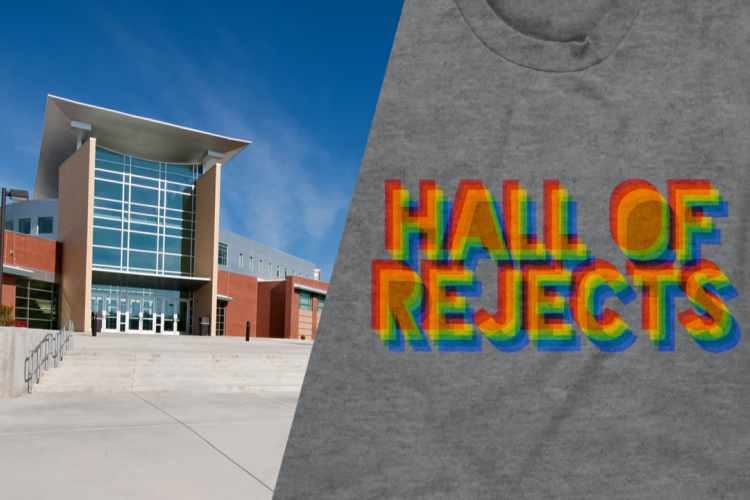
Guide your students through the fictional case of Ben Brewer, a high school student who was suspended for violating the school dress code. They will examine the First Amendment right to free speech and apply the precedent of Tinker v. Des Moines to answer the question: Does the Constitution protect Ben’s right to wear a band T-shirt to school?
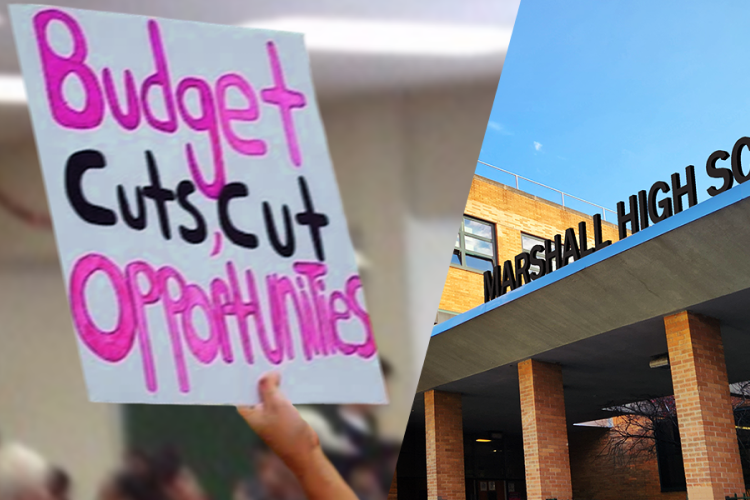
Guide your students through the fictional case of Jamie Johnson, a high school student who was suspended after a student protest got out of hand. They will examine the Fourteenth Amendment right to due process and apply the precedent of Goss v. Lopez to answer the question: Does the Constitution protect Jamie’s right to due process before a suspension from school?
What happens during a simulation?
Setup & Login
Select a module, create a session, and share it with your students by displaying it on your shared classroom screen. Ask your students to go to the URL displayed at the top of the classroom screen and enter the code to join.
As students log in, the software assigns them a role. Ask your students to read their Brief. Once enough students have logged in, you can begin by clicking Close Roster. Late students will be able to join at any time.
A Supreme Decision module can usually be run in one 60-minute session or split into two 40-minute sessions.
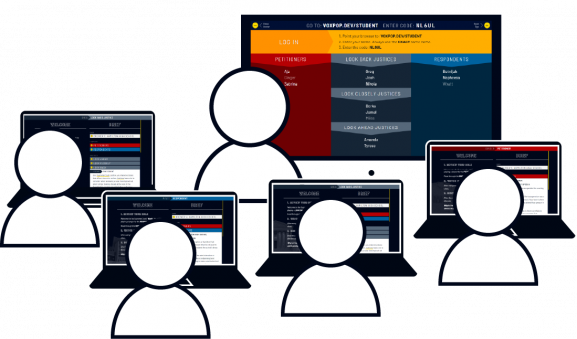
Welcome
Play the Welcome video to introduce Supreme Decision to your class. Each phase of Supreme Decision is accompanied by a video that explains what students need to do.
At the end of the Welcome video, have your students circle up in their groups and discuss the question displayed on the left side of their screen. Have one member of each group share their answer.
Classroom Screen
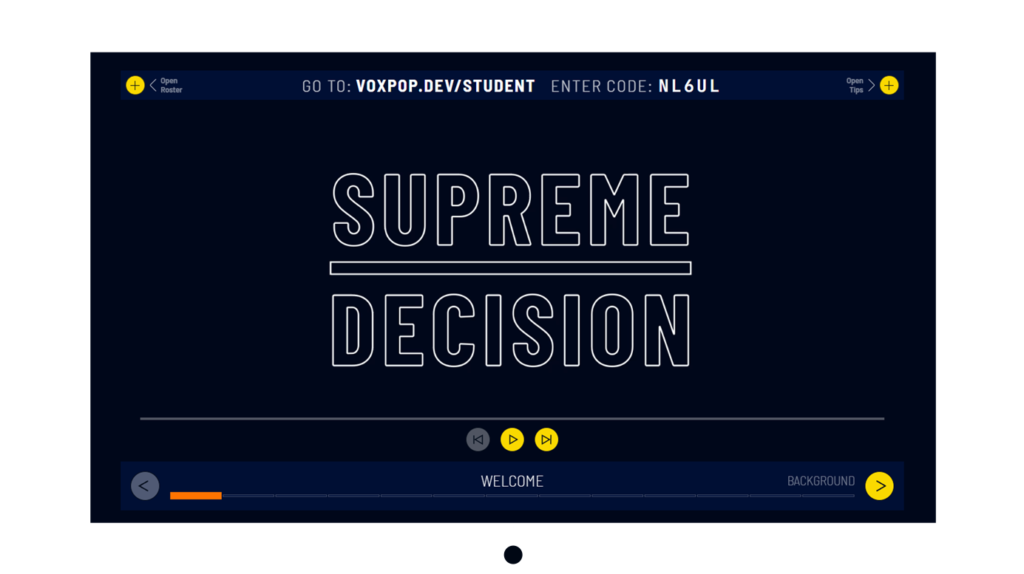
Student Justice Screen
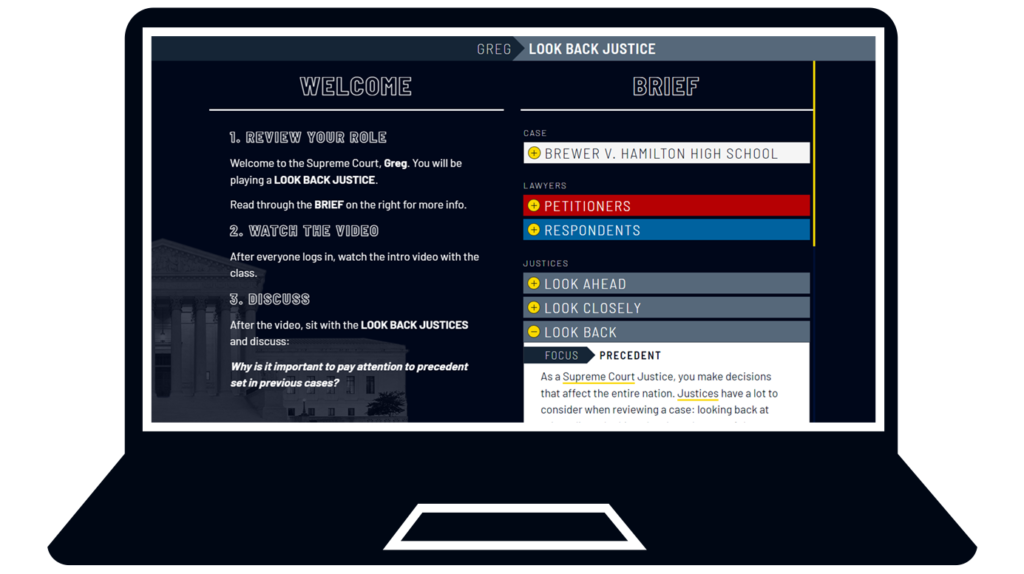
Student Lawyer Screen
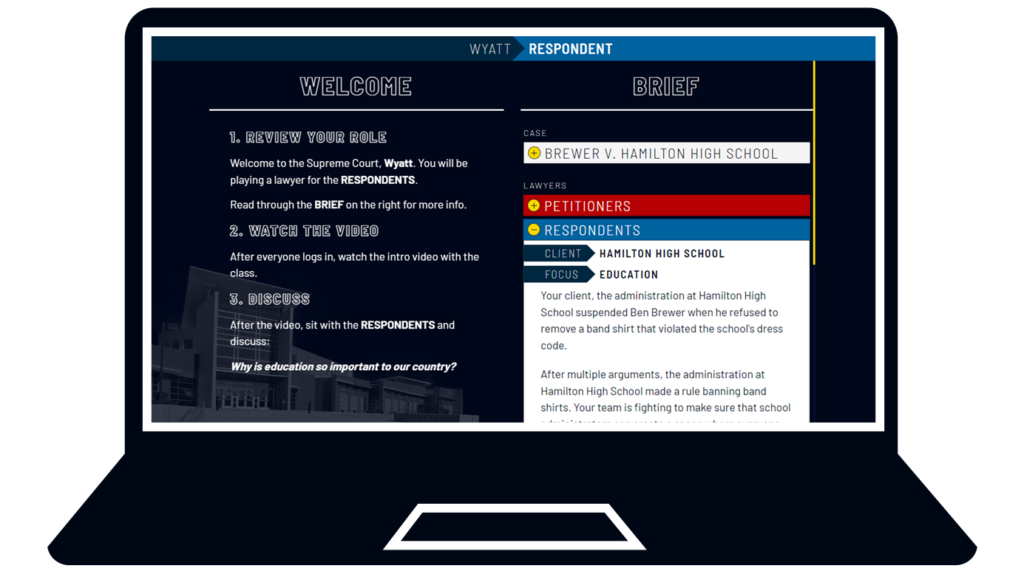
Background
Play the Background video to explain the case to the class. Use the discussion question at the end to ensure that students understand the basics of the case.
Classroom Screen

Student Justice Screen
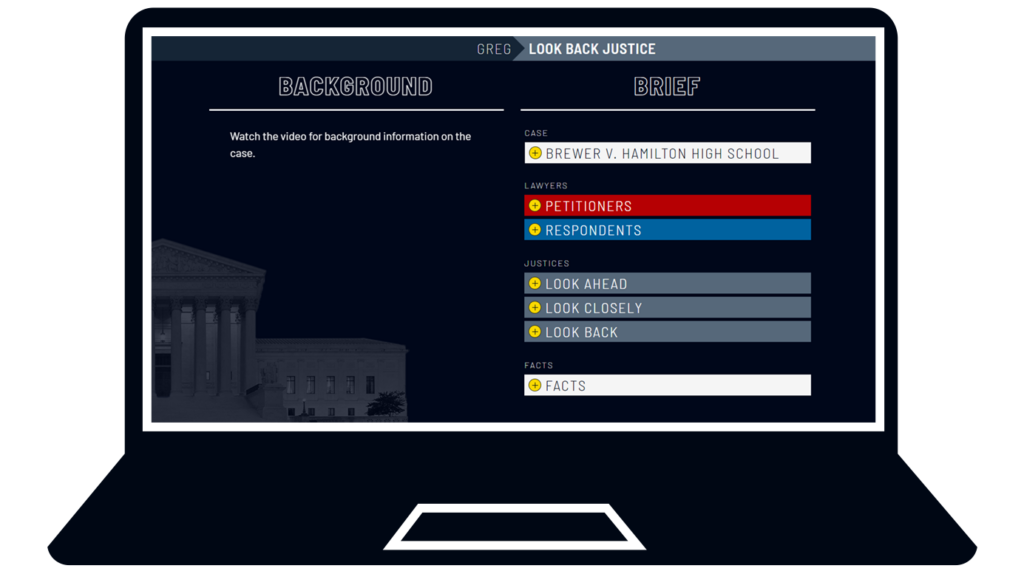
Student Lawyer Screen
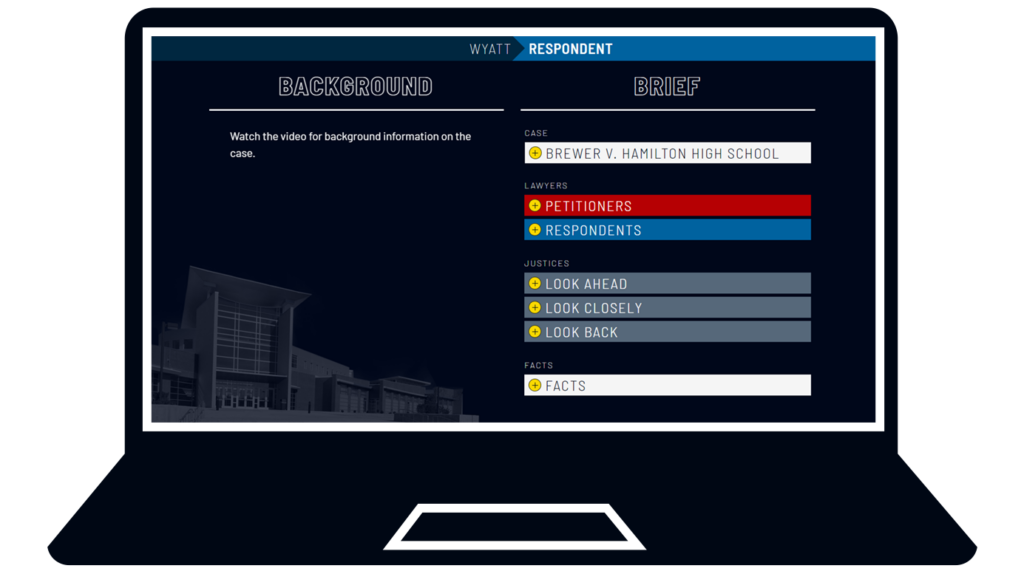
Judicial Lenses
A short video will introduce the concept of Judicial Lenses. Use the discussion questions at the end to ensure that students understand each of the lenses the Justices are using.
Classroom Screen
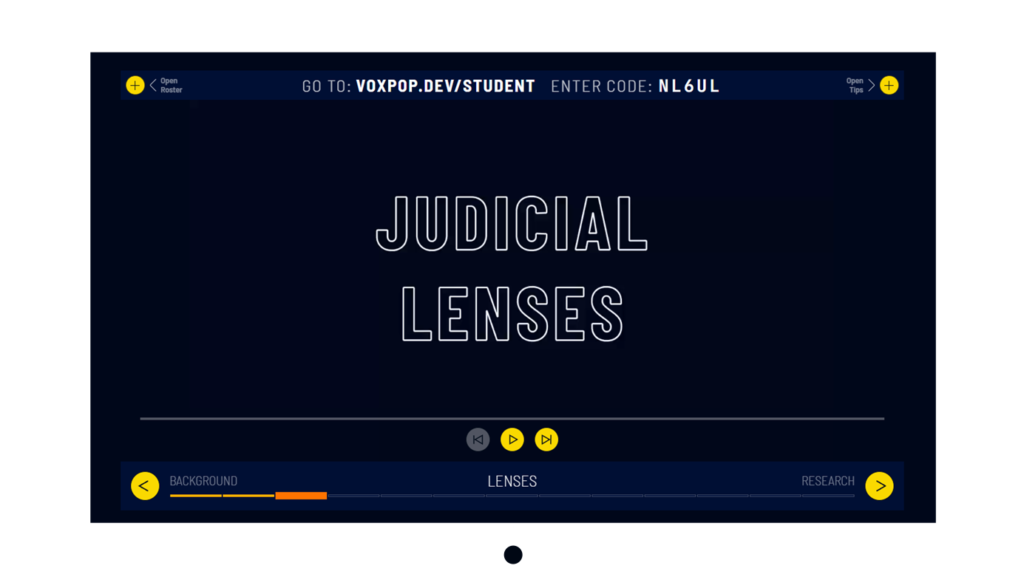
Student Justice Screen
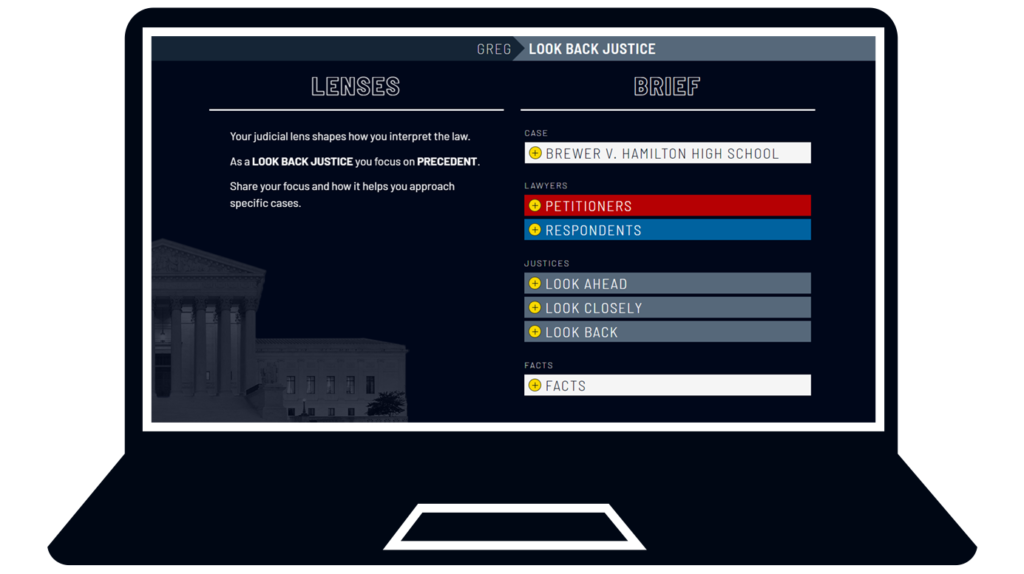
Student Lawyer Screen
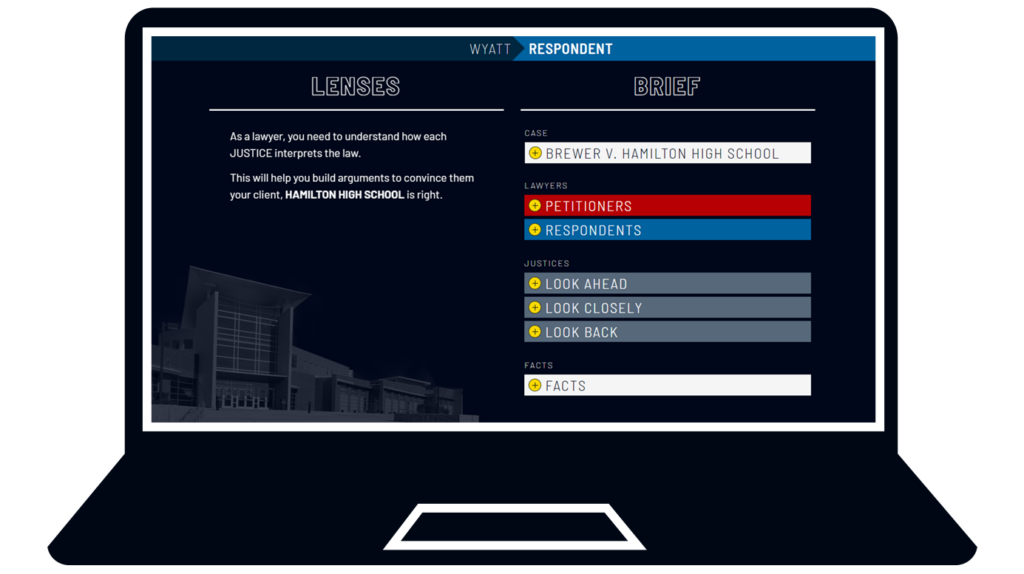
The Facts
The Facts video provides further details on the case, including information on precedent.
After the video:
- The Petitioners should work together to identify the facts that support their case.
- The Respondents should work together to identify the facts that support their case.
- The Justices should identify which facts are most relevant to their Judicial Lens.
Classroom Screen
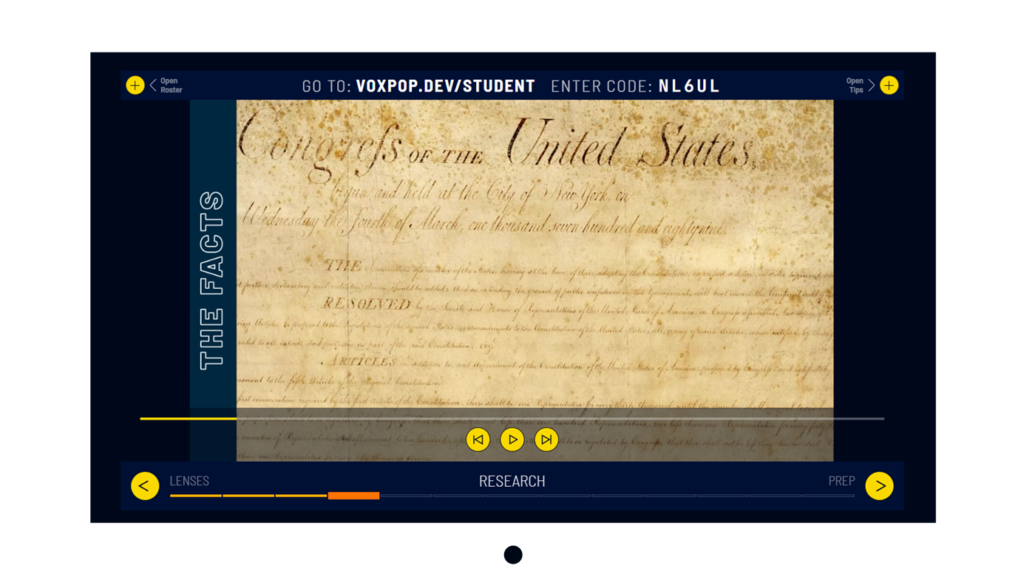
Student Justice Screen
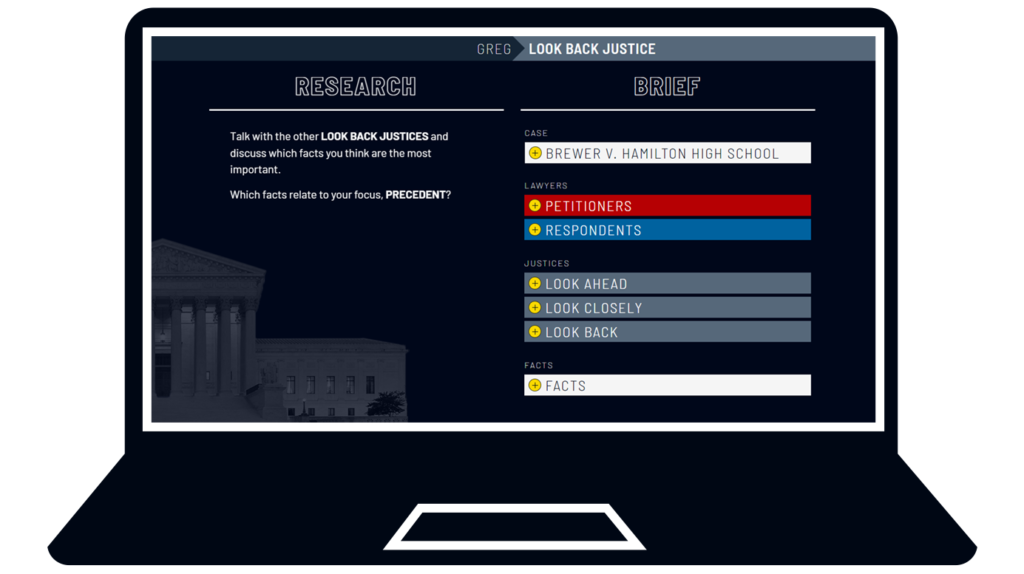
Student Lawyer Screen
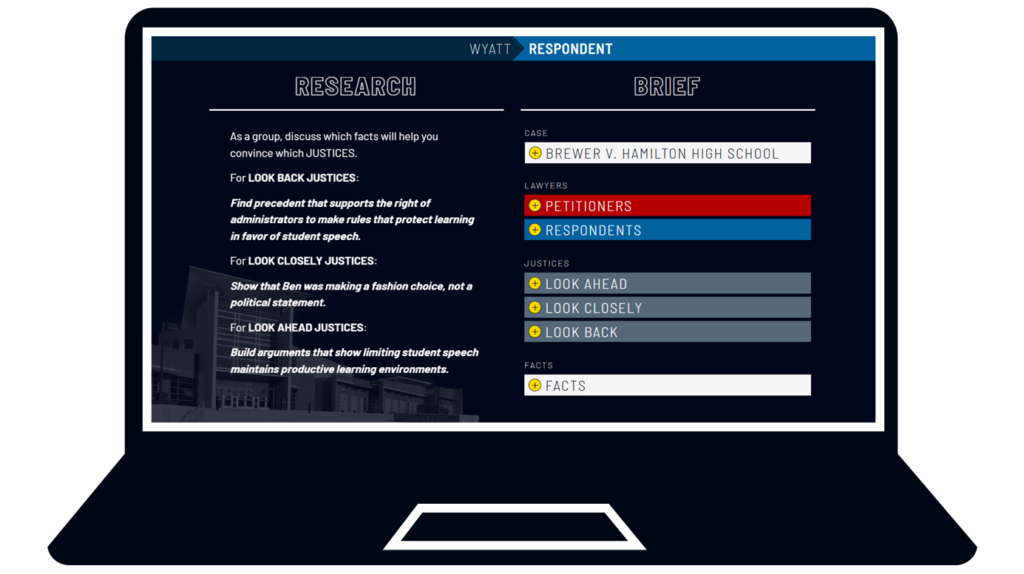
Prep for Oral Arguments
During this phase, students will take notes to prepare for Oral Arguments.
The Petitioners and Respondents should write their opening statements and notes for Oral Arguments. Each team should pick 1-3 students to deliver the opening statement.
Justices should write questions that challenge the Petitioners and Respondents to justify their arguments and explain their positions.
Classroom Screen
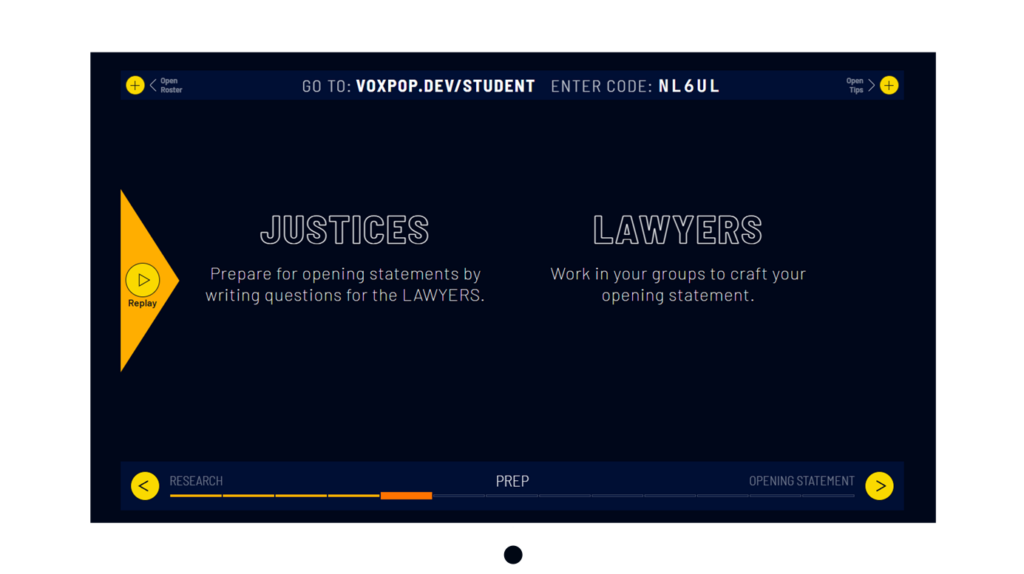
Student Justice Screen

Student Lawyer Screen
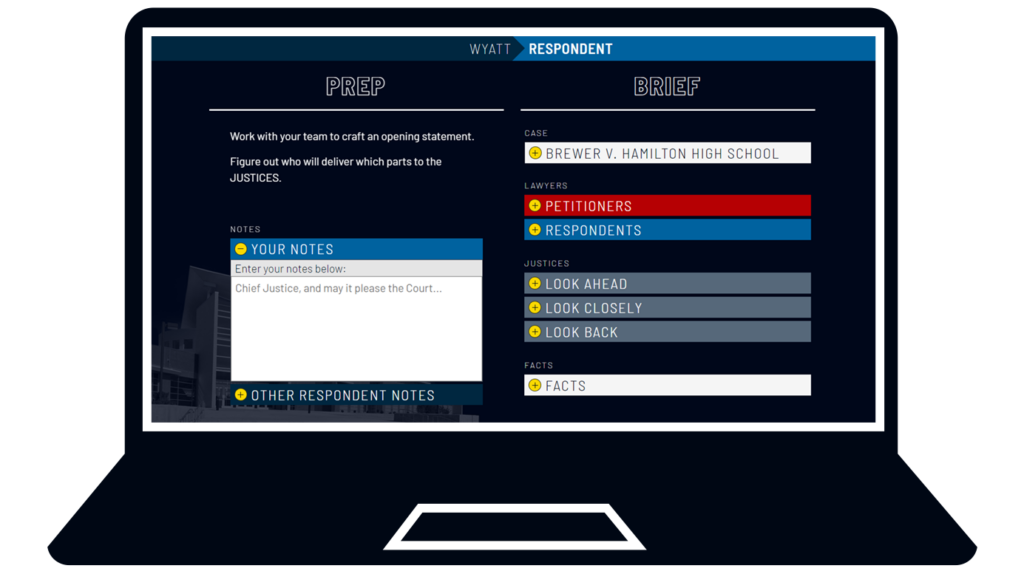
Opening Statements
The Petitioners and Respondents will each be called on to deliver their opening statements to the Justices.
Justices should listen closely and add to their questions for each side.
Classroom Screen

Student Justice Screen
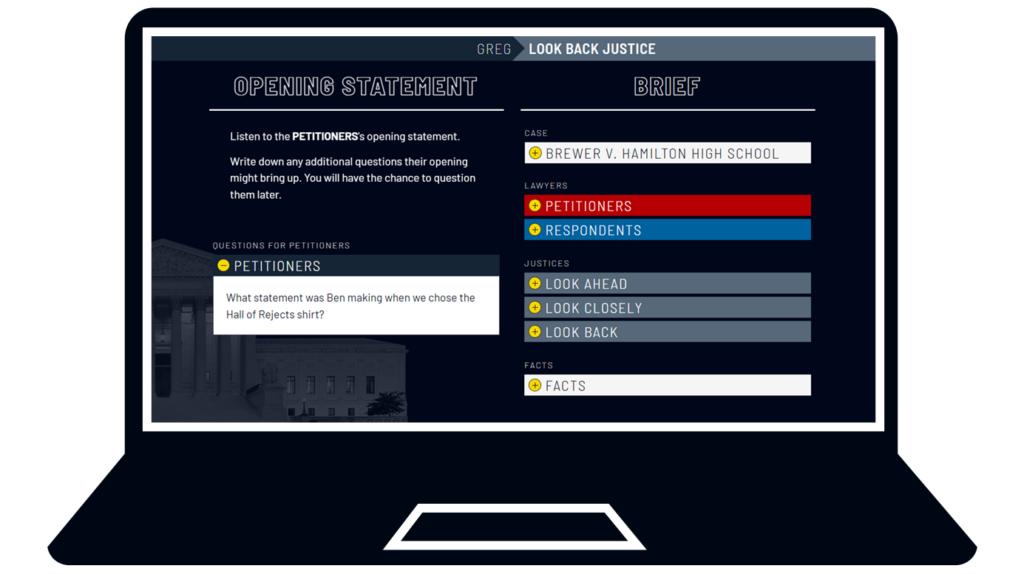
Student Lawyer Screen
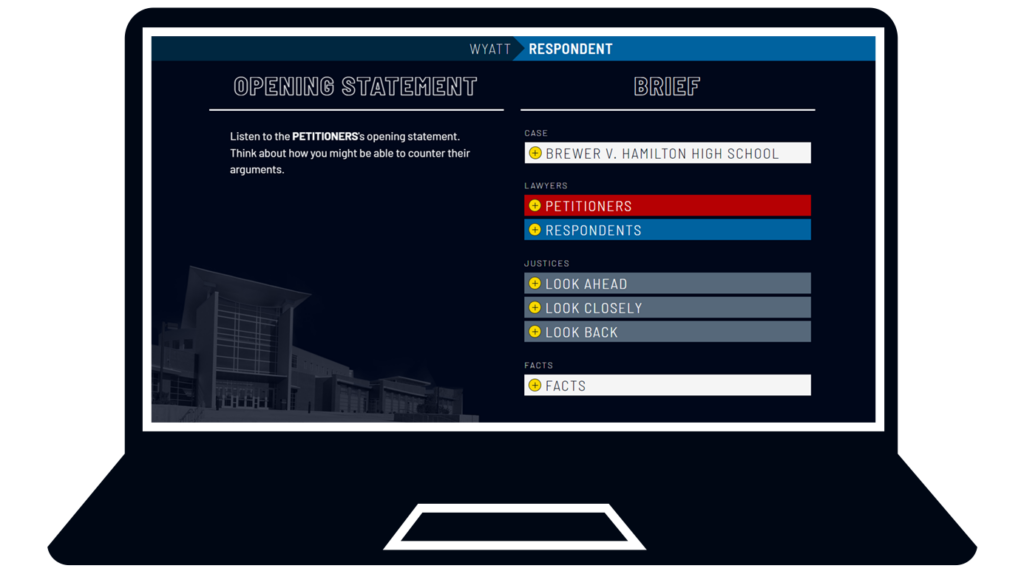
Questions
After Opening Statements, the Justices will be called on to ask each side questions about their arguments.
Classroom Screen

Student Justice Screen
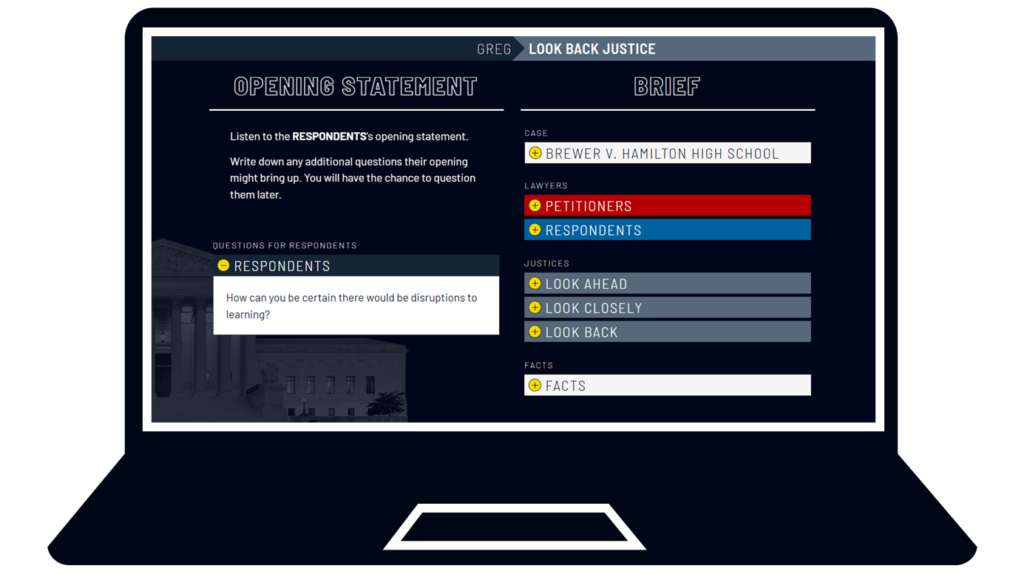
Student Lawyer Screen
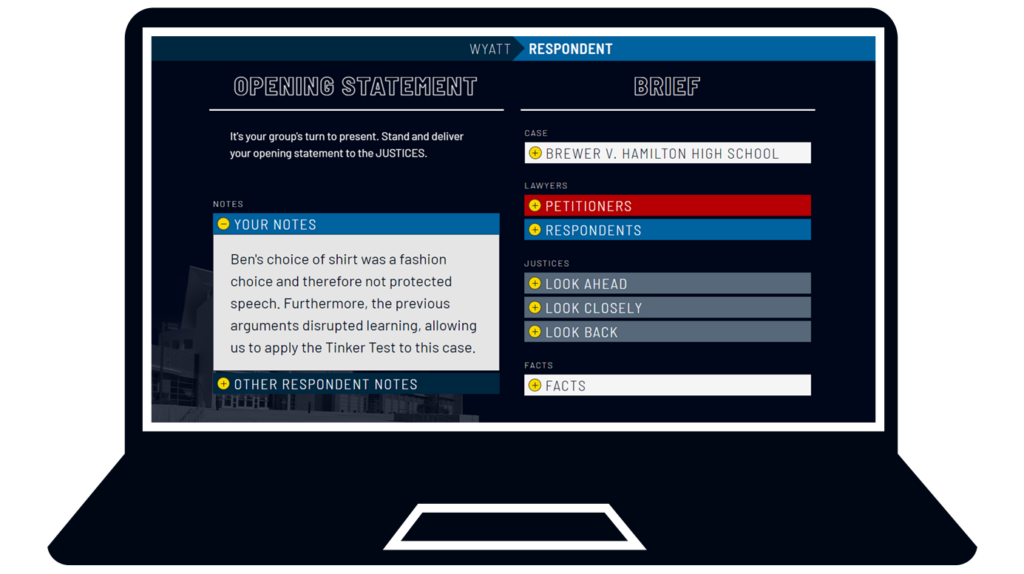
Deliberation
During Deliberation, encourage the Justices to share their thoughts on the case and their interpretation of the law.
Classroom Screen
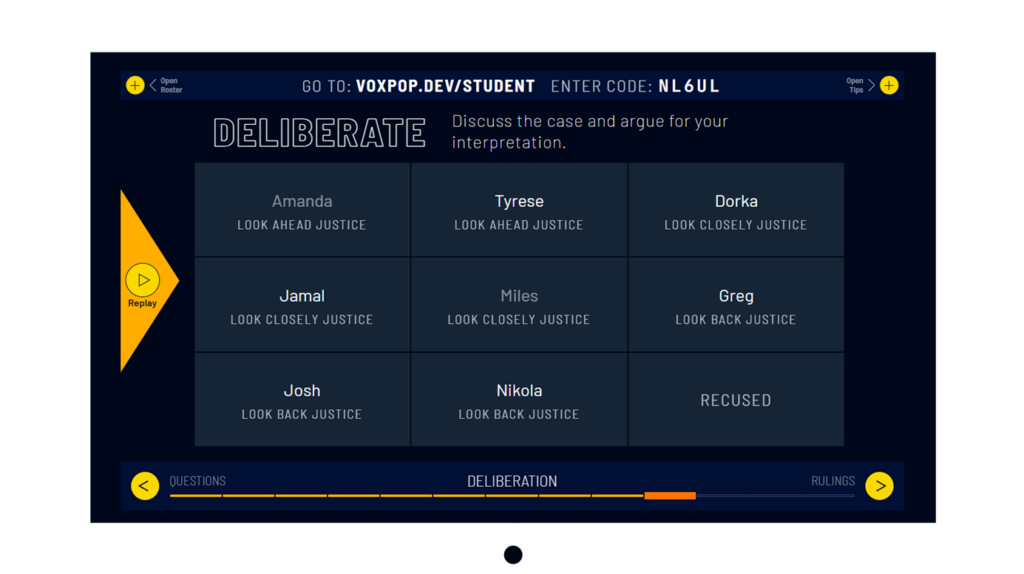
Student Justice Screen
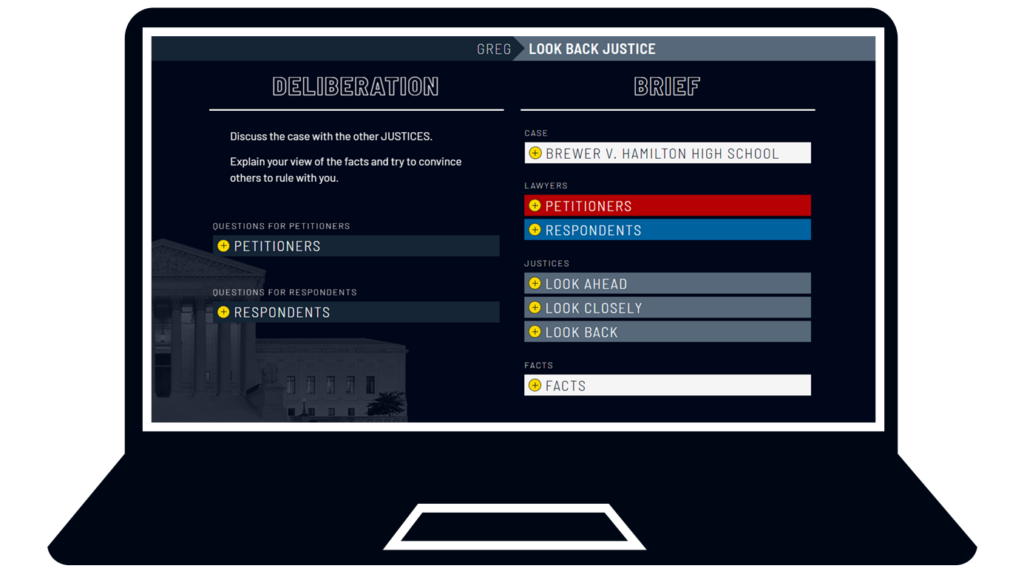
Student Lawyer Screen
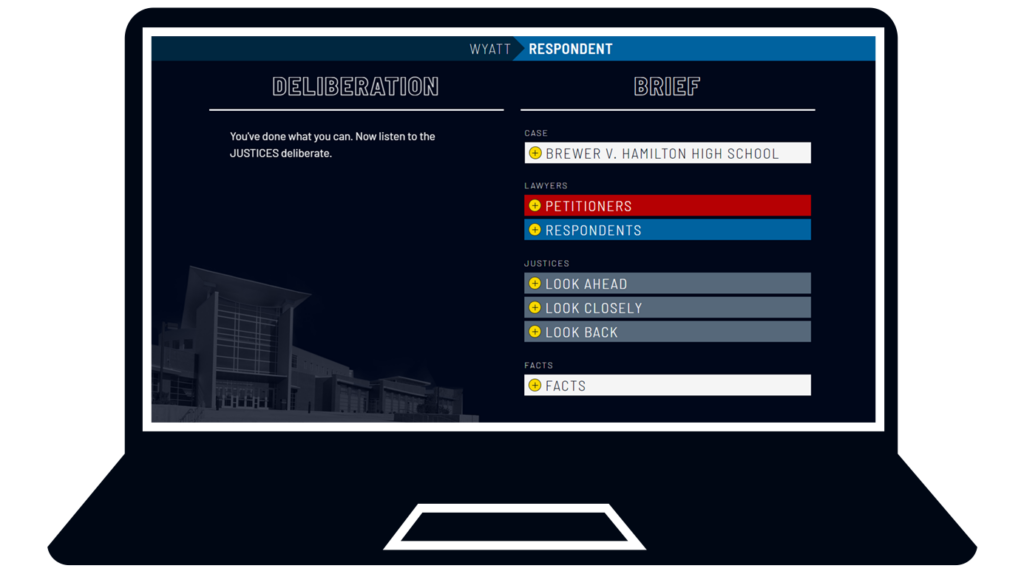
Ruling
The Justices should use their device to offer a ruling. If you have time, you can ask each Justice to take a moment and explain their ruling.
In case of a tie, the ruling goes to the Respondents.
Classroom Screen

Student Justice Screen
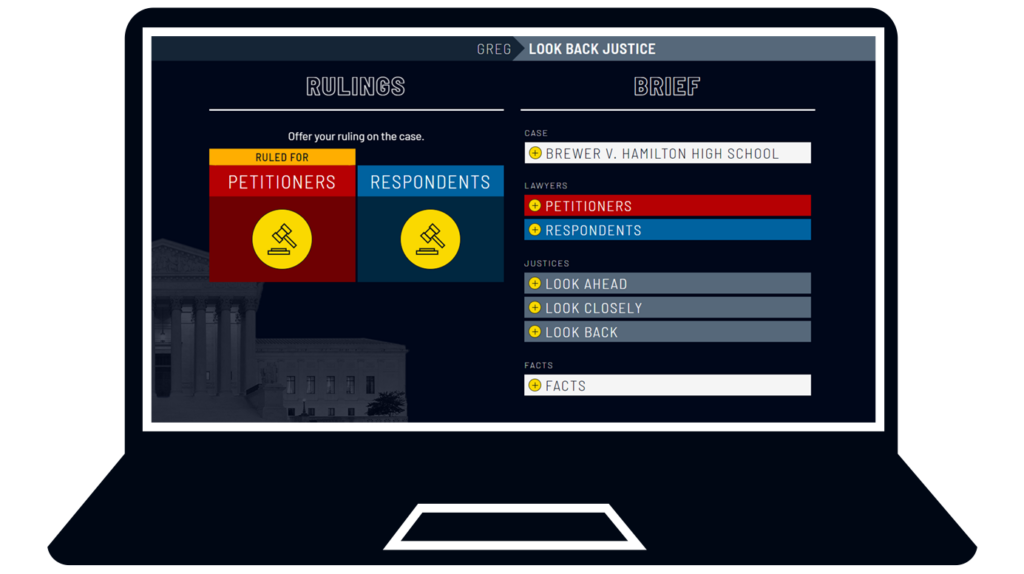
Student Lawyer Screen
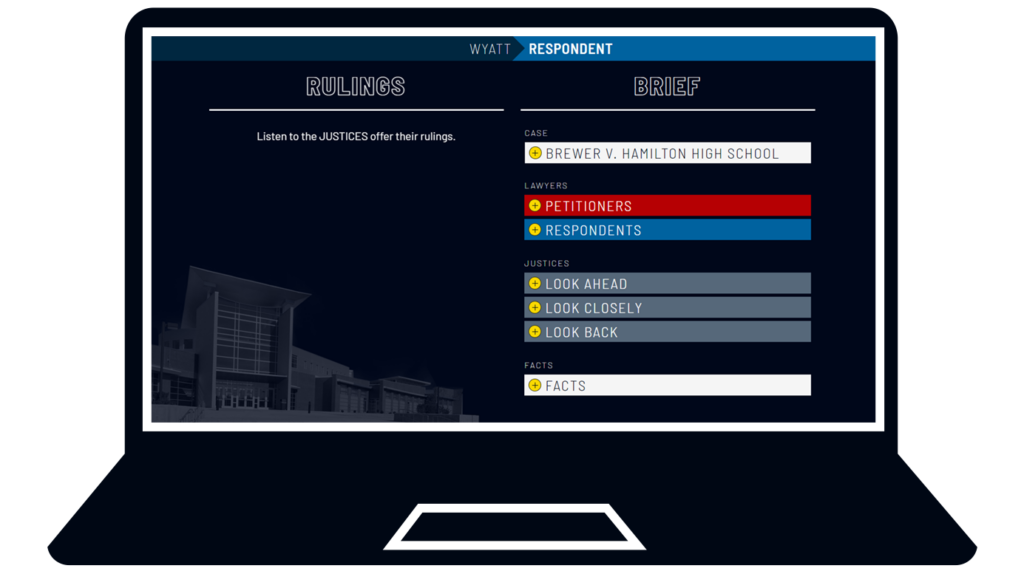
Results
The Results page displays the final ruling, divided into majority and minority opinions. Give those in the minority a moment to share their reasoning.
Classroom Screen
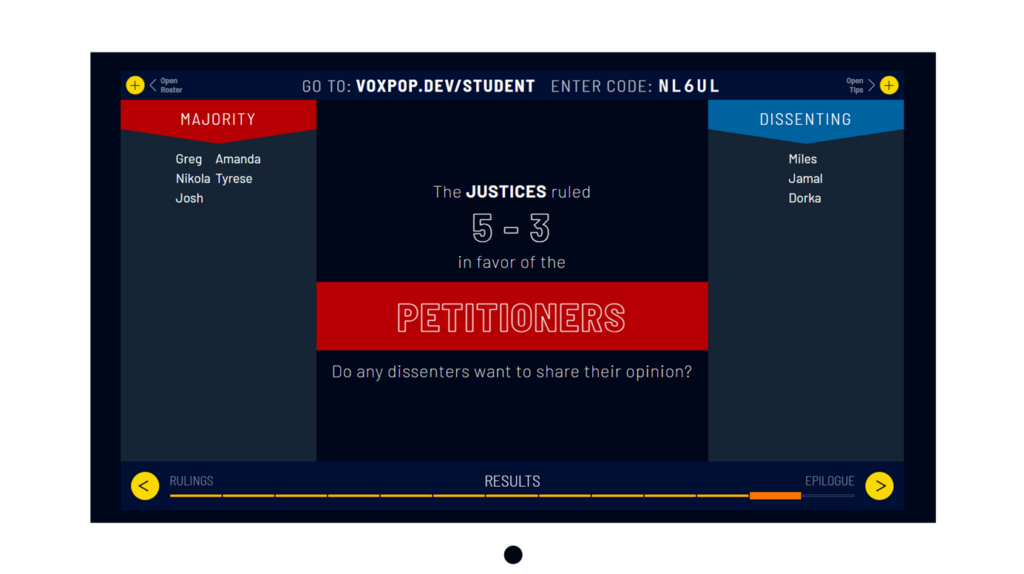
Student Justice Screen
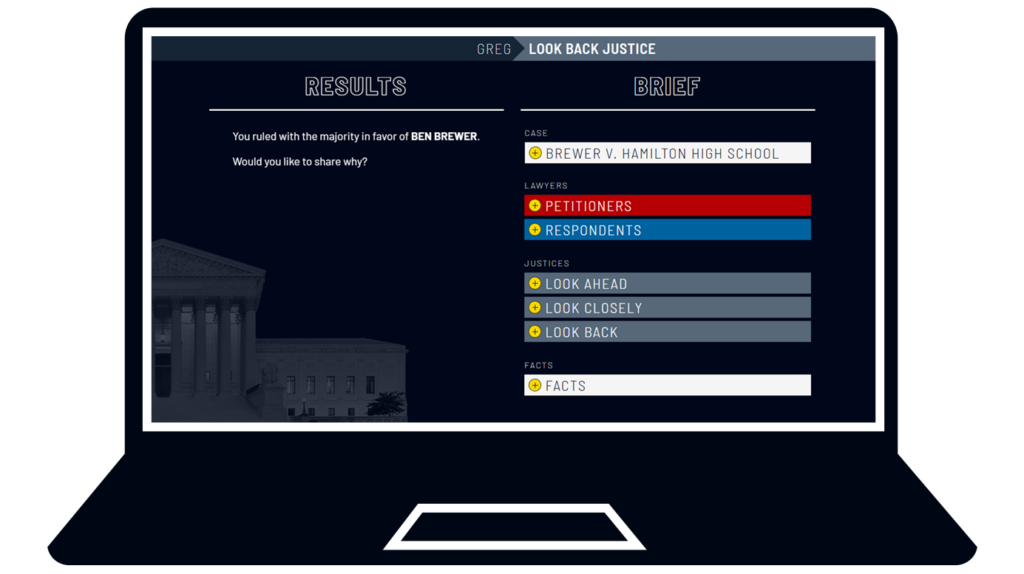
Student Lawyer Screen

Epilogue
Ask the students to step out of the role-play to discuss the case and share insights from the experience.
Classroom Screen

Student Justice Screen
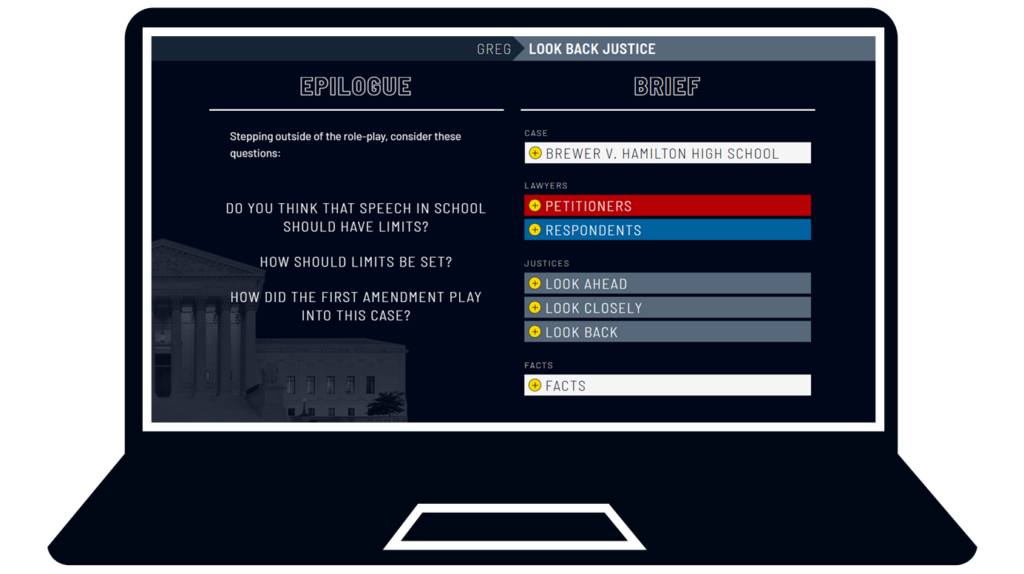
Student Lawyer Screen
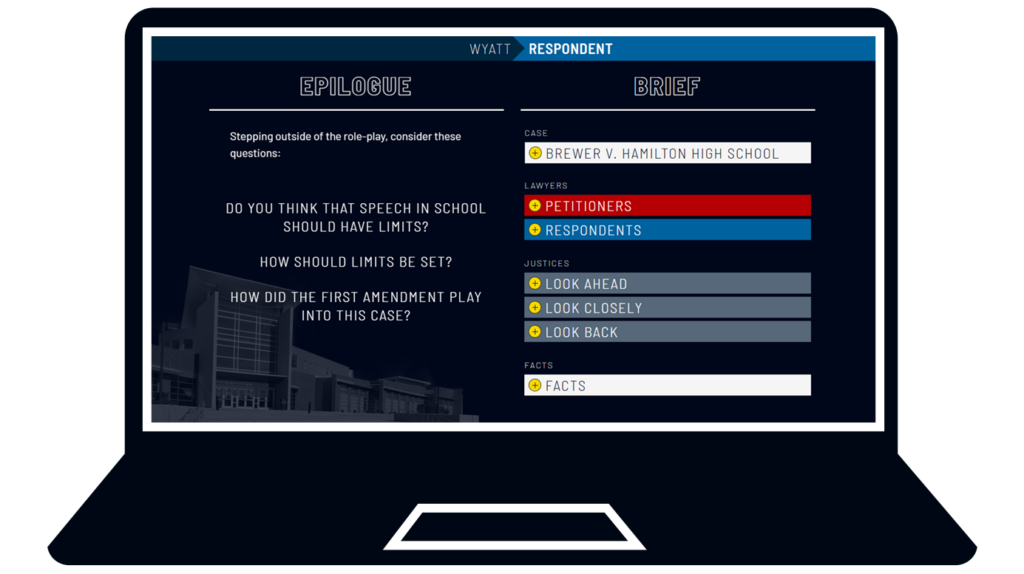
What makes our simulations unique?
Whether it’s the enthusiasm of a class full of engaged students or the connections fostered as students collaborate on the case, we know that simulations are so much more than entertainment. Simulations work well for students, as they:
Inspire inquiry, are goal-oriented, and provide immediate, communal feedback—all of which are proven to motivate students.
Allow students to do, not just see or hear. Simulating roles makes the systems and processes they learn more relevant and memorable.
Invite students to explore and examine different perspectives in a structured environment.
Why Simulations Work For Educators
They require little preparation for busy teachers as teaching with a simulation is more about being a facilitator of learning than an imparter of information. Teachers are guided through a process that is outlined on the teacher screen while content and role-specific materials appear on student screens. Rather than manage materials and information delivery, teachers explore the content along with the students and engage with small groups as they work.
